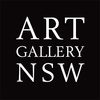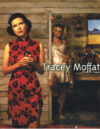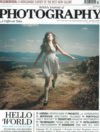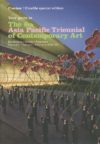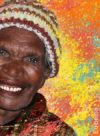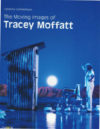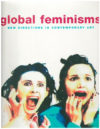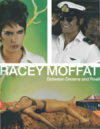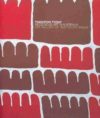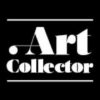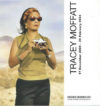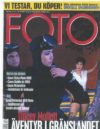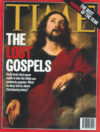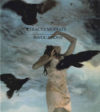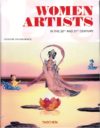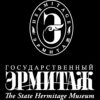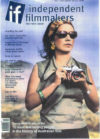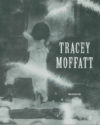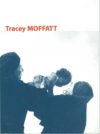Spirit Landscapes is a major new body of work from Tracey Moffatt, comprising six distinct components: five different photographic series and a moving image piece. It represents the artist’s return to highly personal themes relating to family, home, and the land, specifically within the context of her Australian Aboriginal heritage. A key concept is the notion of a “return to country,” a seeking out of one’s ancestral lands and an attempt to reconnect with history and tradition. After many years living abroad, Moffatt began a three year exploration of places in her native Australia that were scenes of important events in her own life and that of her family. The resulting body of work, her first since the Plantation series of 2009, reflects on the way her personal story is intertwined with the often tragic history of race relations in Australia. Yet, as Moffat points out, it can also be “opened up” and read as a universal meditation on the significance of land and place.
With the series of monumental glossy prints, As I Lay Back on My Ancestral Land, we see views of the sky, clouds, and trees captured as the artist lay down upon her Aboriginal family’s traditional land, the cloudy sky morphing into an overarching female nude, like the Egyptian goddess Nut, that can be read as the artist’s bodily connection to the land and her ecstatic feelings at the time. This exploration of the physical presence of “home” is continued in the Suburban Landscape series, which depicts locales in suburban Brisbane that the artist roamed as a youth, overlaid with texts that relate certain key memories she associates with these spaces, the psychically charged slogans contrasting sharply with an almost childlike innocence suggested by the stenciled crayon lettering. The series of small triptychs, Night Spirits in Red, Yellow, Blue and Green, seems to combine the powerful spiritual presence seen in the vivid sky of As I Lay Back on My Ancestral Land with the banal suburban bleakness of the Suburban Landscape series. According to Moffatt, these triptychs depict actual “spirit energies” captured in haunted places that she visited at night, shooting her camera blindly into the dark sky, guided only by intuition and a touching faith that even the most quotidian settings are infused with spiritual presences. The theme of a haunted locale is taken up again in Picturesque Cherbourg, a series of colored, tourist brochure-like views of the Aboriginal government mission to which some members of the artist’s family were relocated in the 1920s, and where many of her relatives still reside. The seemingly idyllic images have been torn apart and reassembled in handmade collage, suggestive of the lingering psychological scars from a very dark period in history in which “natives” were removed from their lands, sometimes separated from their children, and resettled in artificial communities often riddled with social dysfunction. The theme of artificiality and sanitization of the past, embodied in Picturesque Cherbourg’s picture postcard aesthetic, is heightened in Pioneer Dreaming, a group of small diptychs of images taken from stills of 1950s Hollywood Westerns; here, we see dreamy heroines gazing lovingly at “their country,” with a sense of ownership denied the original Native American inhabitants. Yet despite the often dark histories they elide, these Hollywood films have often been a powerful source of inspiration, including for Moffatt herself, their narratives taking the form of modern myths that tap into depths of emotion and experience that were once the exclusive domain of traditional culture. The film stills of Pioneer Dreaming in a sense come to life with In & Out, a five-minute, low-tech moving image piece, its gritty, distopic images in stark contrast to the glamour of Hollywood. Images of brothel doors opening and closing, scenes that are not uncommon in the current Australian mining boom, are interspersed with shots of a large, ominous mining hole. This connection between mining and prostitution points also to the exploitation of the land and its inhabitants by outsiders, along with the violence this entails, a theme that resonates with all the other series in the exhibition.
Born in Brisbane, Australia, in 1960, Moffatt is one of today’s leading international visual artists working in photography, film and video. Many of her photographs and short films have achieved iconic status both in her home country of Australia and around the world. Her photographs play with many different printing processes and have a filmic, narrative quality. Moffatt approaches all her photographic and video work as a film director, and she is known as a powerful visual storyteller. She first gained significant critical acclaim when her short film, Night Cries, was selected for official competition at the 1990 Cannes Film Festival. Her first feature film, beDevil, was also selected for Cannes in 1993. She was selected for the international section of the 1997 Venice Biennale and was also featured in the biennials of Sydney (1993, 1996, 2008), Singapore (2011), São Paulo (1998) and Gwangju (1995). A major exhibition at the Dia Center for the Arts in New York in 1997-98 solidified her international reputation. In 2003, a large retrospective exhibition of Moffatt’s work was held at the Museum of Contemporary Art, Sydney. In 2007, her photographic series, Scarred For Life, was exhibited at the Guggenheim Museum and her video, LOVE, at the Brooklyn Museum in New York. In 2012, the Museum of Modern Art, New York, presented a comprehensive retrospective of Moffatt’s film and video work, featuring screenings of all her major works and a ten-day series of artist talks at the museum.



